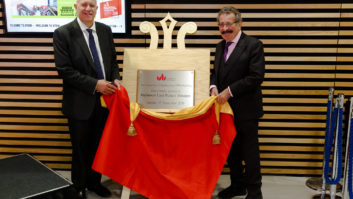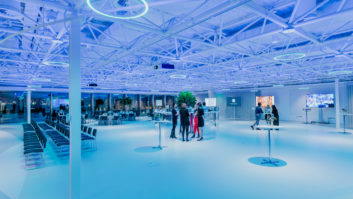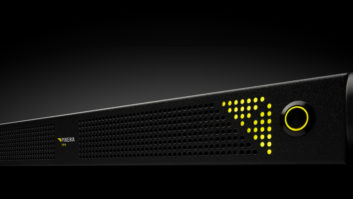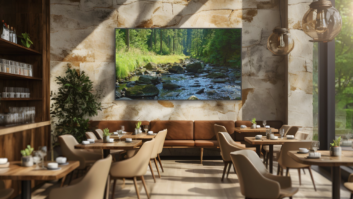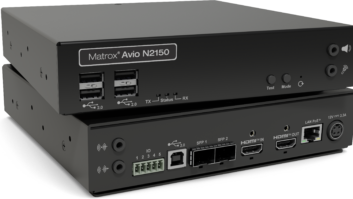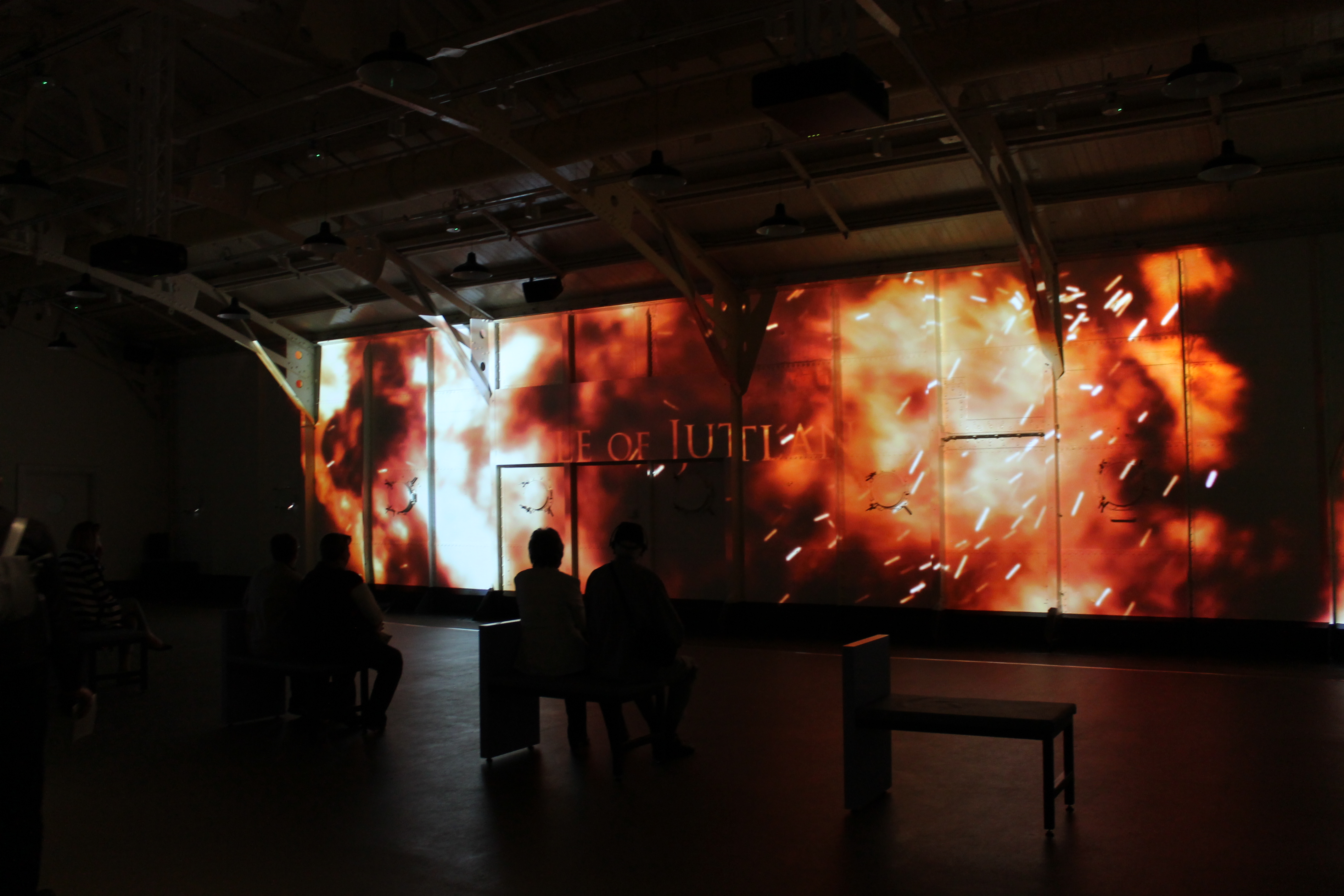
Steve May speaks to the experts about the changing face of AV
Given the rapidly changing nature of our industry, just how do corporate and educational AV departments plan to address requirements today and tomorrow?
To better understand the role of these evolving end-users, and get a glimpse at what tomorrow’s AV department may look like, AVTE talked to industry leaders on the front line.
Ben Pain, manager of audio-visual, technical and media services (Events Department), at the Royal College of Physicians (RCP), is keeping an eye on augmented reality. “The possibilities for using AR in the live event environment are intriguing,” he told us, “but it may be a couple of years before we see event planners adapting their content to make use of these technologies.”
He adds: “Going forward, app and software development look likely to be the areas that will have the most impact on the way AV is used both from a control and a UX perspective.”
‘Change agents’
Ben reveals that at the RCP, his team are considered “change agents” at the highest levels.
“Not only in terms of the way we deploy technology but also in how we introduce the organisation to new technology and new ways of working,” he says. “While it depends largely on the ambition of the AV team as to what the parameters of their role are within their organisation, I think a modern AV department should be involved at both a strategic and an operational level. Organisations are essentially trying to sell a product or an idea, and AV is the means by which we communicate.”
I think a modern AV department should be involved at both a strategic and an operational level
Positive impact
Owen Ellis, chairman of the AV User Group (pictured), believes advances are having a positive, practical impact on the day-to-day workload. For one thing, he tells AVTE, there’s less physical support required for the day to day standard meetings, because they’re being managed more effectively and efficiently through remote services. “There’s also more focus on the high end spaces and ‘VIP’ events, and more overlap with UCC (IT), with a greater requirement for network knowledge,” he says.
There’s also less burden on maintenance, thanks to mostly solid state hardware. Remote support technologies and state-of-the-art video network operations centres are taking the strain.

Ellis says he’s not sure if it’s due to any wider adoption of IoT though. “I hate these phrases! It’s more about the move from standalone to network-connected, and a future move from hardware to software,” he counters.
But not everyone in the industry is on the same page. It’s important to recognise the intransigence of some AV departments, he cautions. “Some users haven’t made or completed the first transition, let alone thought about the second,” he says.“Although undoubtedly system deployment will change, it be many years before this happens on a large scale.” Ultimately though it’ll change the way users manage and control systems, he suggests.
Tomorrow’s world
And what of tomorrow’s AV ecosystems? The resolution revolution continues to be a water-cooler topic, although it seems content creation isn’t yet driving an upswing in 4K distribution. “The hardware rollout is significant as most screens are UHD capable anyway, whether we want it or not,” concedes Ellis. “But as most of the content is still HD we’re not yet seeing a massive move to 4K distribution infrastructure. Although again as so many distribution products already support 4K, those that have had the content requirement to transition appear to have managed successfully.”
Looking ahead, will artificial intelligence (AI) and voice control have a role in the AV solutions of tomorrow? Ellis isn’t so sure. “This is difficult to predict until we see some real world working applications we could use in the corporate end user environment,” he mulls. Ultimately, perhaps the biggest change to tomorrow’s AV department will be in the skill sets required?
“There’s no doubt that the abilities they have and the services they offer will change,” suggests Ellis. “There will be less integration at the lower end, as there is more commoditization. There will also be less integration required as we transition from hardware to software, and from on premises to the cloud.
A lot of the tried and tested AV models are being challenged by newer, cheaper alternative solutions
He continues: “The SIs will no longer be building racks of equipment, they’ll have to focus on high-end skills like commissioning. They’ll also need to consider new revenue generating services that they don’t provide today, as there won’t be the margin in either equipment sales or integration!” The RCP’s Ben Pain suggests it’s not such much skill sets which are changing, as mindsets.
“A lot of the tried and tested AV models are being challenged by newer, cheaper alternative solutions,” he says, “Why use Polycom when you can use Skype?” Pain also advises caution when it comes to UHD. “It’s not as significant as display manufacturers and the content creators would have you believe,” he suggests. “UHD and 4K are pretty much the Emperors’ new clothes in many meeting situations. How close to a 50-inch screen would you need to be to get the benefit of UHD? Its impact and cost on infrastructure strategy far outweighs its benefits, except for very specific scenarios,” he notes.
Convergence
On the convergence of AV and IT, Pain suggests: “It’s a venn diagram, not two perpendicular lines. There are overlapping skills and responsibilities that need to be negotiated. What’s more important is that both parties understand the others language and priorities.”
When it comes to IoT, though, there’s nothing new to report, he adds contentiously. “The technology is slightly different and more advanced than what we’ve seen in the past, but the concept is largely the same. We’ve been doing it for years though conference control systems. It might have a commercial impact on the likes of Crestron and AMX if their business model doesn’t take into account any extra competition.”
One of Pain’s biggest concerns, he reveals, is a lack of appropriate training. “The CTS is outdated and too US-centric. We need a proper apprenticeship programme and a qualification for both B-TEC and degree students.”
Ian Carling, director and project manager at AV and lighting specialist Fusion, suggests: “With a forever changing industry, it’s hard to pinpoint what skills will be most important in the coming years. What is clear is that there will be new technology and software available for each new project, this requires constant learning and researching to find the perfect product.”
One skill that Carling urges his operatives to have is an NVQ level 3 in electrical installation. He also believes the industry is only now getting to grips with challenges posed by network connectivity. “It’s inevitable that with more and more devices connected, people will find ever increasing ways to subvert new technology, it’s a challenge that will need meeting and will be a continuing problem.”

When it comes to AI and voice control, Carling can see some innovations in his crystal ball. “They could have an interesting role to play in personalising the meeting room environment by remembering users preferences and recalling those settings as people enter a space.”
He’s also enthusiastic for UHD. “We’re slowly starting to see the increase of 4K equipment,” he says. “Pretty much all the content created these days is shot in 4K, so if you have the content and the technology why not display it.”
Of course, the more things change, the more they remain the same. “We don’t consider AV ever just being about a big screen or projector,” comments Owen Ellis. “We’ve always been responsible for the audio system, control systems and building wide TV systems. We’ve also generally always had an engagement in the booking and scheduling systems and that’s typically how support services were booked or arranged to support the meetings. Generally these services are still supported by AV even though they may be networked based and with infrastructure associated with them.”
Enjoying this content?
Never miss a thing, by signing up to receive your complimentary copy of AV Technology Europe magazine (print or digital edition) and our weekly newsletters.
You can also follow us on Twitter @AVTechnologyEurope or contact our editor Michael Garwood directly via email: mgarwood@nbmedia.com

